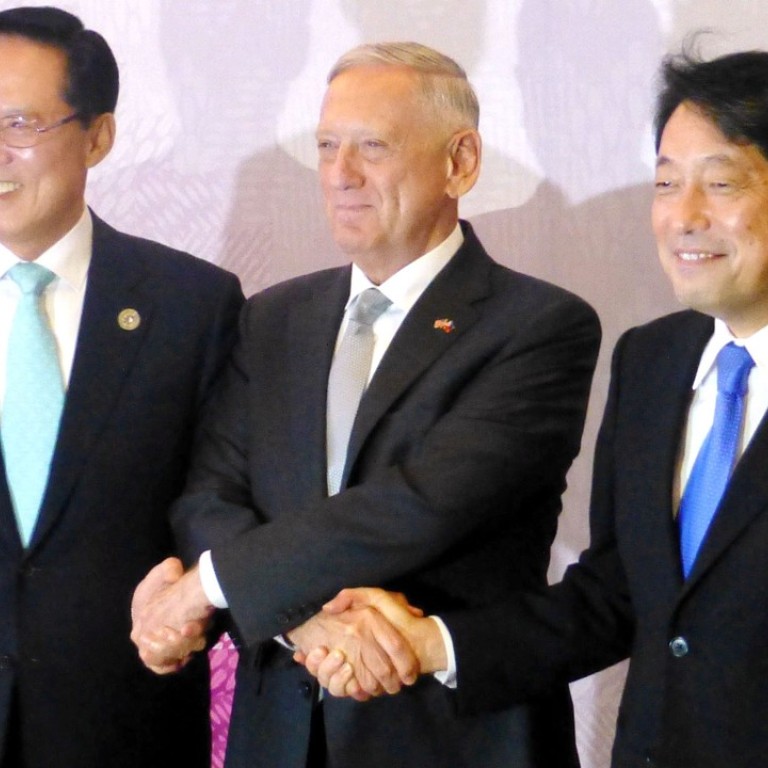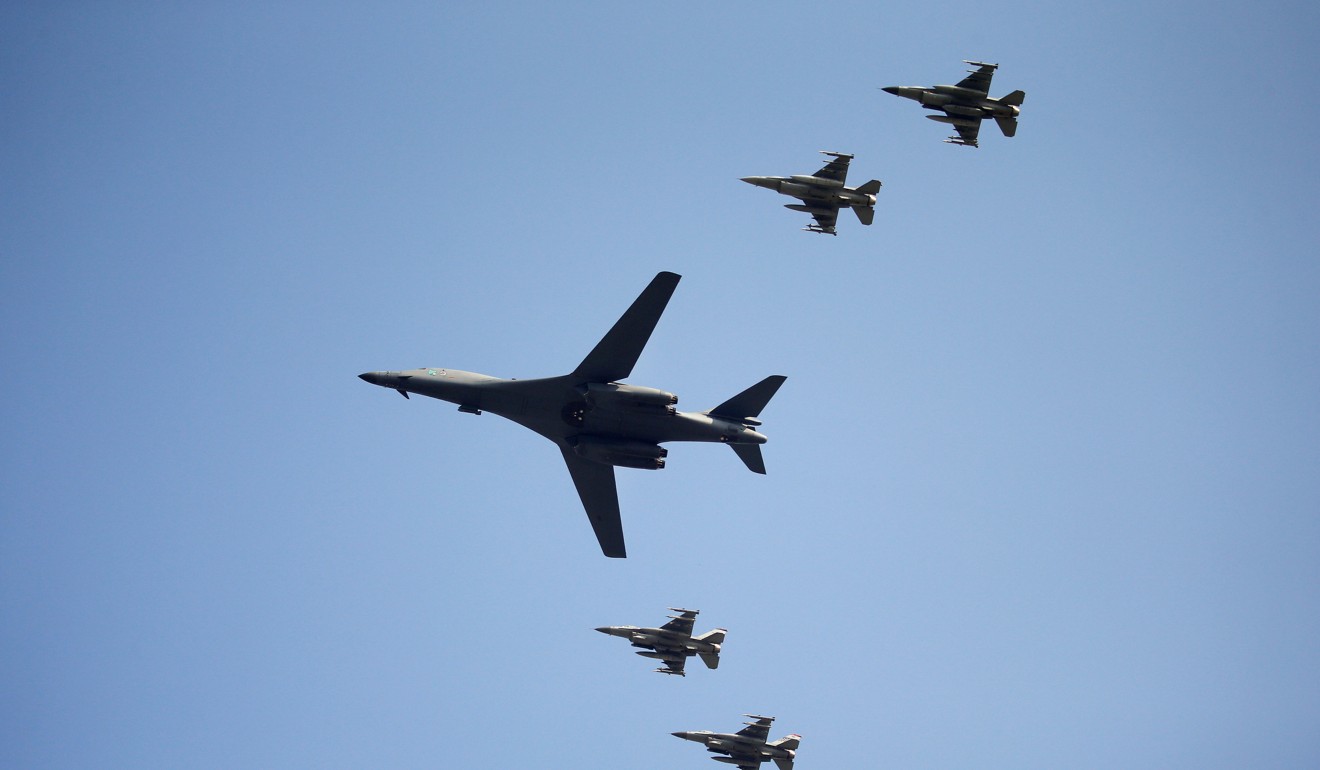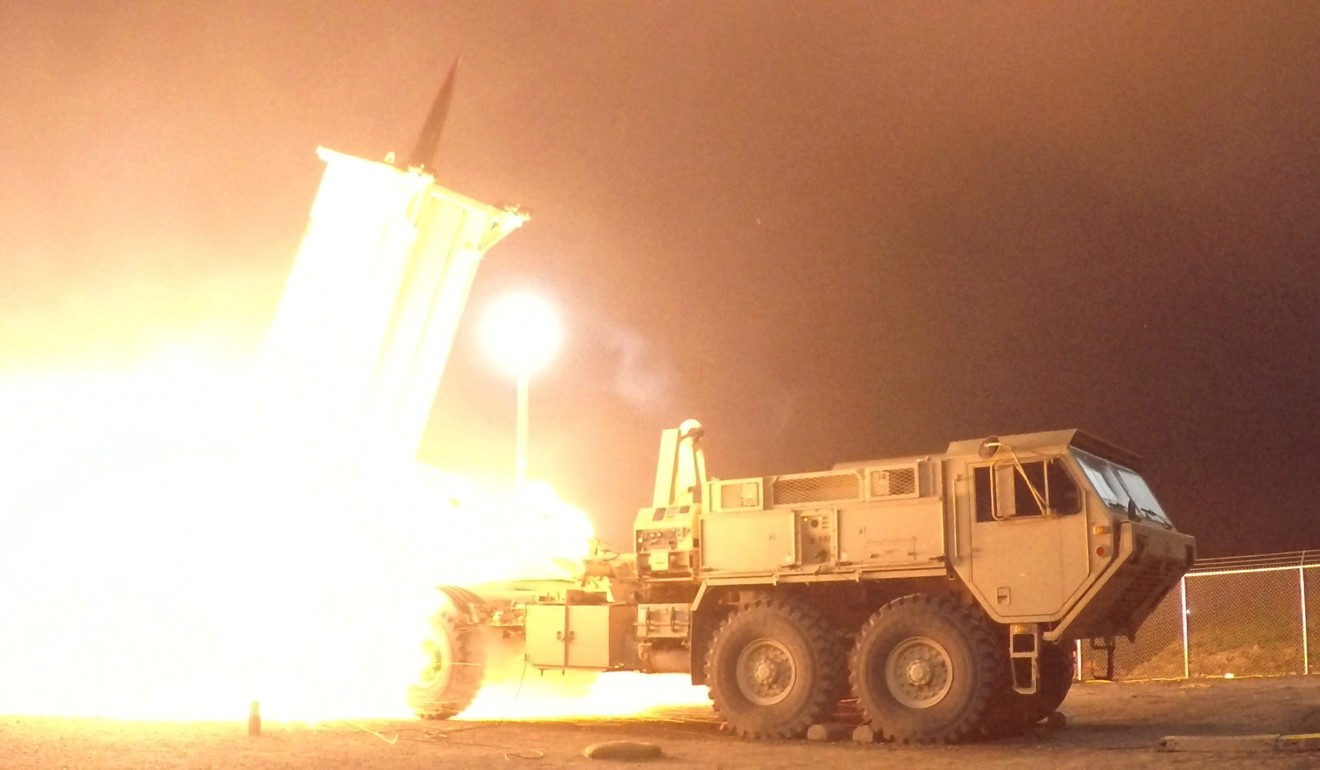
US, Japan and South Korea vow to step up joint air drills over Korean Peninsula
Three ministers pledge to take steps to bolster their ability to improve information sharing and strengthen responses to North Korean threats
The US, Japanese and South Korean governments pledged to conduct more joint air drills over the Korean Peninsula to improve their ability to launch coordinated responses to military threats by Pyongyang.
US Secretary of Defence James Mattis, Japanese Defence Minister Itsunori Onodera and South Korean Minister of National Defense Song Young-moo pledged “enhanced defence cooperation” in a meeting held during an Association of Southeast Asian Nations (Asean) defence ministers conference in the Philippines.
“The three ministers lauded collective efforts to expand information sharing on North Korea’s nuclear and missile threats and enhance response capabilities, including the execution of multiple combined flight training missions with US bomber aircraft,” according to the joint announcement.

“They reaffirmed that the three nations are committed to enhancing defence cooperation and to maintaining a rules-based order. Accordingly, the ministers pledged to take necessary steps to bolster their ability to improve information sharing and strengthen responses to North Korean threats.”
The tripartite meeting, held as part of the Asean “Defence Ministerial Meeting Plus”, highlighted the resolve of the US and its main East Asian allies to deter North Korea from conducting more nuclear detonations or missile launches. Those tests, carried out more regularly over the past year, were part of efforts by the country’s leader, Kim Jong-un, to develop nuclear weapons capable of reaching the US mainland.
Earlier this month, the US military flew two Air Force B-1 bombers over the Korean Peninsula in a show of force. After entering South Korean airspace, the bombers carried out air-to-ground missile drills in waters off the east coast of South Korea, then flew over the South to waters between it and China to repeat the drill, according to South Korea’s military.
The two B-1B Lancer bombers were accompanied by two South Korean F-15K fighters after leaving their base in Guam, the South’s Joint Chiefs of Staff said in a news release soon after the drill.
The US military said in a separate statement at the time that Japanese fighters had joined the exercise, making it the first nighttime combined exercise for US bombers with fighters from Japan and South Korea.
The joint statement from the meeting in the Philippines made no mention of China or Russia, which are also part of the Asean Defence Ministerial Meeting Plus grouping.
Although China and Russia have supported the most recent sanctions against North Korea, brought forward by the US at the UN Security Council, the two countries have also called on the US and South Korea to scale back their joint military exercises in the region.
Following passage last month of new UN Security Council sanctions, which drastically cut exports of oil and fuel products to North Korea, China reiterated its call for the dismantling of a US missile defence system deployed in South Korea and a return to six-party negotiations with Pyongyang.

“The peninsula issue must be resolved peacefully,” China Foreign Ministry Spokesman Geng Shuang said in a statement issued after the unanimous UN Security Council vote. “The military solution has no way out. China will not allow war or chaos on the Korean peninsula.”
China has consistently opposed the deployment of the Terminal High-Altitude Area Defence system in South Korea, saying it would do little to deter the missile threat from North Korea while allowing the US military to use its radar to look deep into China’s territory and at its missile systems.
The UN Security Council has issued a series of resolutions since 2006, after six-nation talks involving North Korea, China, the US, Japan, South Korea and Russia broke down.

